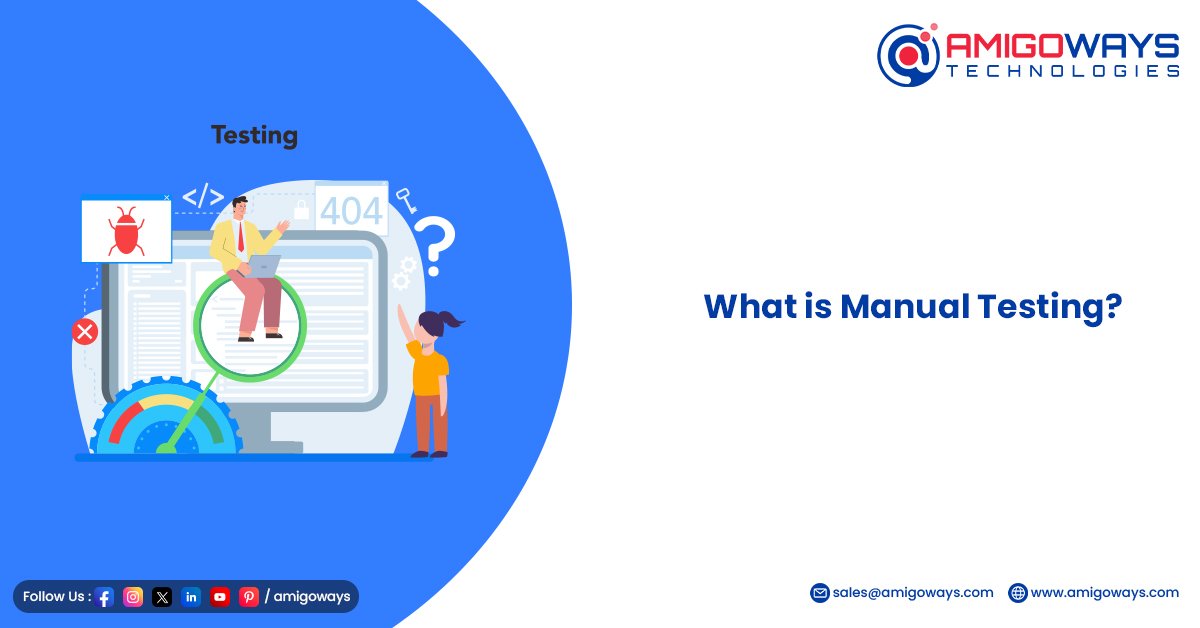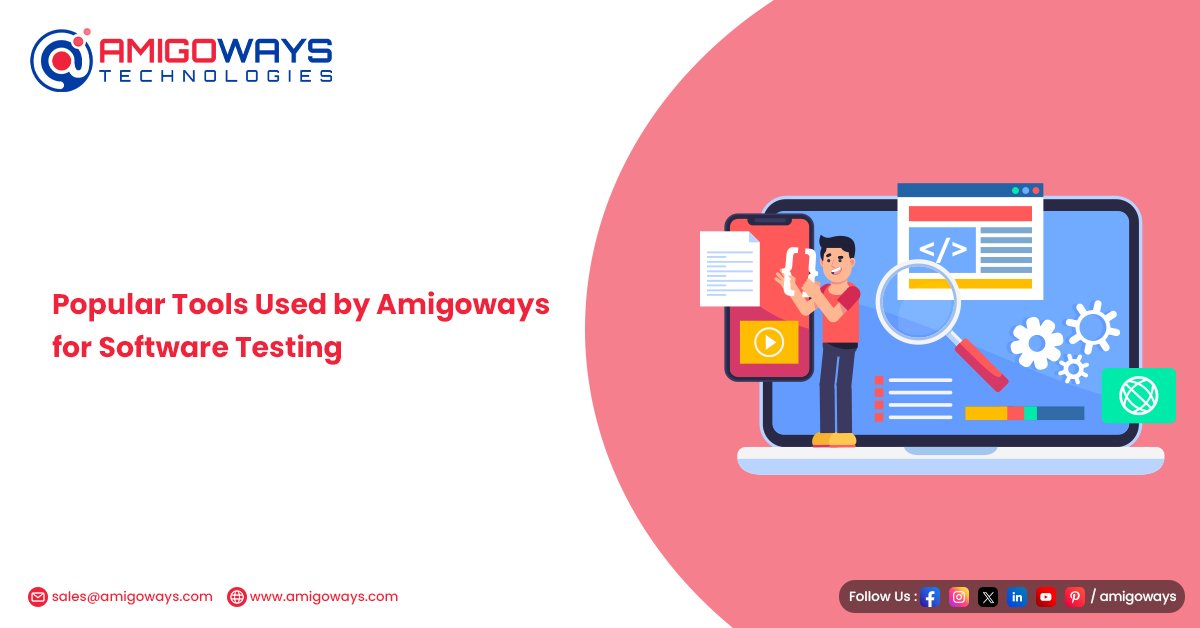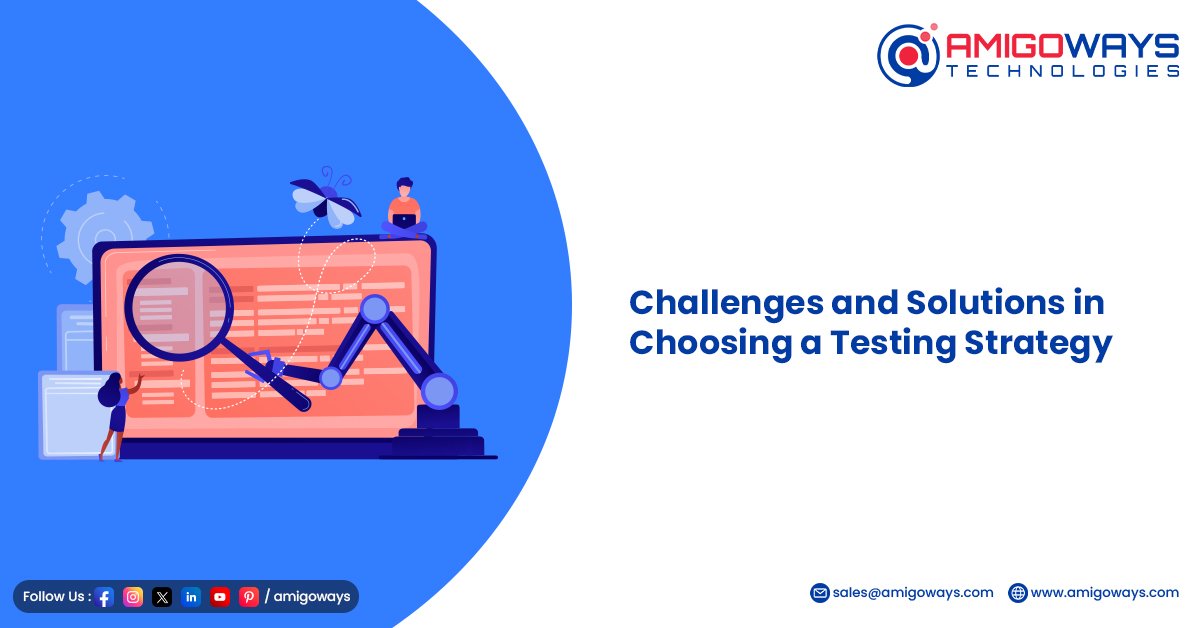In today’s fast-paced software development environment, ensuring quality is paramount. At Amigoways, we recognize the critical role of software testing in delivering bug-free, user-friendly applications. A common question many businesses face is whether to use manual or automated testing. Each has its strengths and challenges, and knowing when to use each can greatly impact a project’s success.
This comprehensive guide will explore the differences between manual and automated testing, the scenarios where each excels, and how Amigoways helps businesses make informed decisions.
What is Manual Testing?
Manual testing involves human testers executing test cases without the use of automation tools. The tester simulates real-world user scenarios to identify bugs, defects, and usability issues.
Advantages of Manual Testing
- Human Insight: Testers can use their judgment to identify usability issues that automated tests may overlook.
- Flexibility: Ideal for ad-hoc testing or scenarios where test cases evolve frequently.
- Cost-Effective for Small Projects: For smaller projects, manual testing may be more economical as there is no need for automation tool setup.
When to Use Manual Testing
- Exploratory Testing: Manual testing excels when the goal is to discover unexpected behavior or new bugs.
- User Experience (UX) Testing: Testing UI and UX is best done manually to get real-time feedback.
- Early-Stage Development: Prototypes or early-stage software can benefit from manual testing, as the UI and features may change frequently.
What is Automated Testing?
Automated testing involves using scripts and tools to execute predefined test cases. It is particularly beneficial for repetitive, high-volume tasks and complex applications.
Advantages of Automated Testing
- Efficiency: Automated tests can run 24/7 without human intervention.
- Reusability: Once written, test scripts can be reused across multiple test cycles.
- Scalability: Automated testing is ideal for large projects with frequent updates.
- Speed: Automated tests execute faster than manual tests, allowing for quicker feedback.
When to Use Automated Testing
- Regression Testing: Automated testing is perfect for verifying that new changes do not break existing functionality.
- Performance Testing: Load and stress testing are more efficient when automated.
- Repetitive Tasks: Automated scripts are ideal for repetitive test cases that don’t require human intuition.
Manual vs Automated Testing: A Detailed Comparison
Understanding the strengths and limitations of both approaches is crucial in making an informed decision.
1. Cost
- Manual Testing: Generally less expensive for small projects but more costly over time for large-scale projects.
- Automated Testing: Requires an initial investment in tools and script creation, but offers long-term cost benefits.
2. Speed
- Manual Testing: Slower, as tests must be executed manually.
- Automated Testing: Much faster, especially for repetitive and regression tests.
3. Accuracy
- Manual Testing: Prone to human error.
- Automated Testing: More accurate for repetitive tasks, as it eliminates human error.
4. Flexibility
- Manual Testing: More adaptable to sudden changes in test cases.
- Automated Testing: Less flexible, as test scripts must be updated for any changes.
5. Scalability
- Manual Testing: Not scalable for large projects.
- Automated Testing: Easily scalable for large and complex projects.
How Amigoways Helps You Choose the Right Strategy
At Amigoways, we assess each project’s unique needs to recommend the ideal testing strategy. Here’s how we guide our clients:
1. Project Size and Complexity Assessment
For small projects with rapidly changing requirements, manual testing is often recommended. For large-scale projects, we lean towards automated testing to ensure scalability.
2. Budget Considerations
We help clients balance the cost of manual vs. automated testing. If budget constraints exist, we often recommend starting with manual testing and transitioning to automation as the project stabilizes.
3. Testing Timeline
For projects with tight deadlines, automated testing provides faster feedback. Amigoways ensures rapid automation script creation for such scenarios.
4. Hybrid Approach
Amigoways often recommends a hybrid testing strategy, combining the strengths of both manual and automated methods. This approach ensures:
- Comprehensive Coverage: Automated scripts handle repetitive tasks, while manual testers focus on exploratory and UX testing.
- Efficiency and Quality: Hybrid testing delivers high-quality results efficiently.
5. Tool Selection
Our team helps clients select the best automation tools based on their project’s tech stack, complexity, and future scalability needs.
Popular Tools Used by Amigoways for Software Testing
Amigoways leverages industry-leading tools to ensure efficient and effective testing:
Manual Testing Tools
- TestRail For test case management and execution.
- JIRA For defect tracking and project management.
Automated Testing Tools
- Selenium A popular open-source automation framework for web applications.
- Appium Ideal for mobile app testing.
- JMeter For performance and load testing.
- Postman For API testing and automation.
Case Studies: How Amigoways Has Helped Businesses Achieve QA Excellence
Case Study 1: E-commerce Platform Optimization
An e-commerce client faced frequent UI changes and required rapid feedback. Amigoways implemented a hybrid approach with:
- Manual Testing for UI and exploratory testing.
- Automated Regression Testing for verifying changes. Result: The client reduced defects by 30% and improved their time-to-market.
Case Study 2: Mobile App Launch
A mobile app client required performance and functional testing. Amigoways deployed:
- Appium for automated functional tests.
- Manual Exploratory Testing for UX improvements. Result: The app launched without critical defects, receiving high user ratings.
Challenges and Solutions in Choosing a Testing Strategy
Challenge 1: Rapidly Changing Requirements
Solution: Manual testing provides flexibility, while automated scripts can be updated as needed.
Challenge 2: Limited Budget
Solution: Start with manual testing and gradually automate high-priority test cases.
Challenge 3: Tight Deadlines
Solution: Automated testing speeds up execution, while manual testers focus on high-risk areas.
The Future of Software Testing at Amigoways
At Amigoways, we stay ahead of industry trends by adopting new technologies like AI-driven testing, continuous testing in DevOps, and shift-left testing strategies. These innovations ensure faster feedback, higher quality, and greater efficiency for our clients.
Conclusion
Choosing between manual and automated testing doesn’t have to be a daunting task. With Amigoways expertise, you can implement the right testing strategy for your project’s unique needs. Whether you’re building a small prototype or a large-scale application, our hybrid approach ensures quality, efficiency, and scalability.








